Single-tenant vs multi-tenant: Which one should your business go with?

Solution Architect
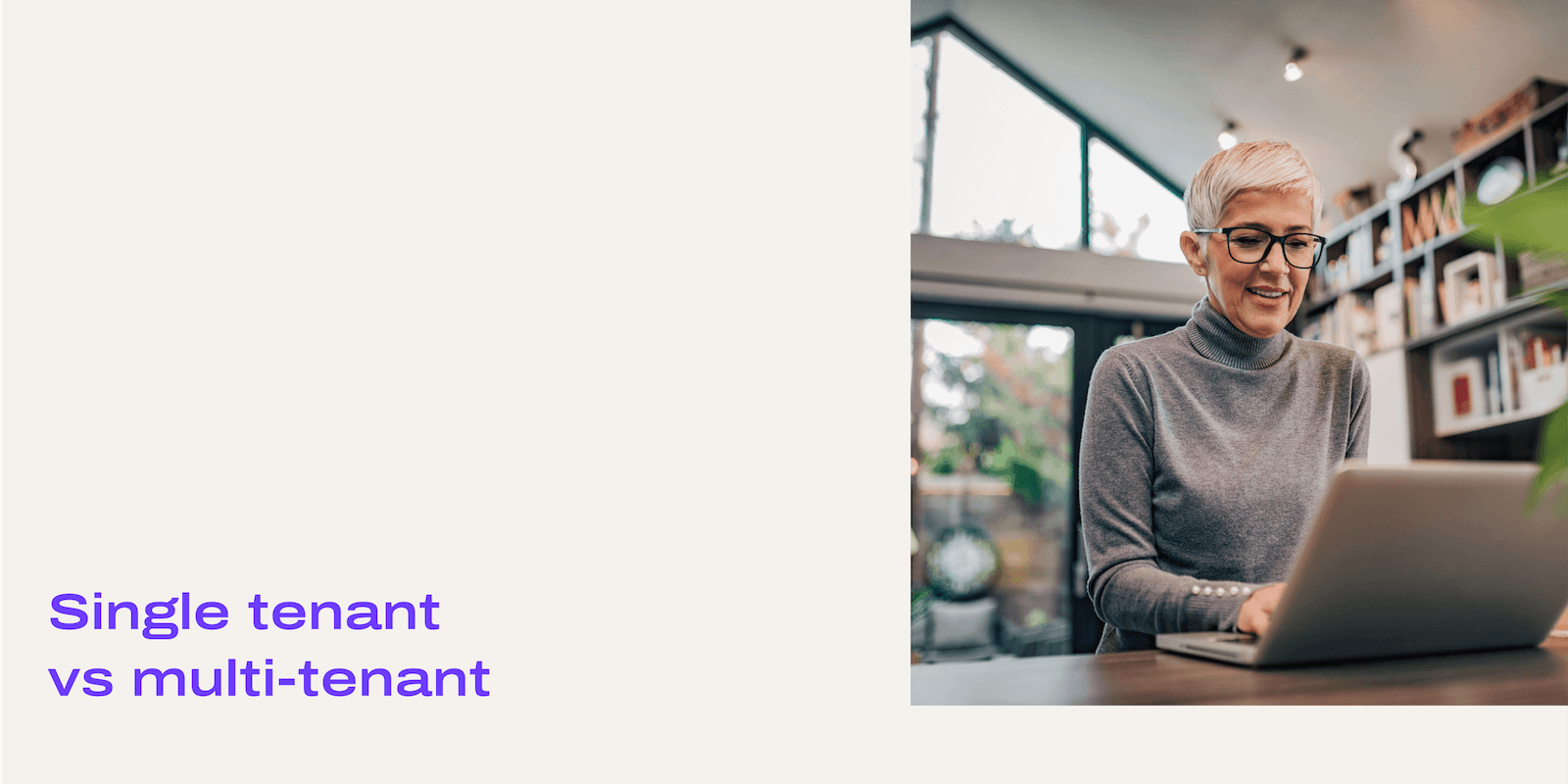
Share
If your business has decided to make the leap into cloud-based software, you’re in good company—worldwide spending on cloud services is expected to grow by 21.7% to reach $482 billion in 2022. (Not surprising when you realize that this technology can save you a ton of time and money.)
Now, though, you have another big decision to make: Will you choose single-tenant or multi-tenant architecture for any new software you invest in?
Wait, what? Are we talking computers or real estate here?
Let’s rewind a little and explain exactly what we mean by tenancy in terms of software. And, while we’re here, we’ll discuss the advantages of software solutions on either side of the coin and the reasons why a multi-tenant model is your best bet when you are going to invest in SaaS (Software as a Service) tools.
👉 Dialpad tip:
You can still be a single tenant and have your servers hosted by Google or Amazon or Azure. This IaaS (Infrastructure as a Service) approach is used by many customers today. So “yes” you are kinda in a multi-tenant infrastructure, but “no” your application, data and security is isolated to just you!
What is single-tenancy?
This is when a single “tenant” (a customer) is served by a single instance of software and its supporting infrastructure. All your data and interactions are housed in separate computers/servers, access rule and database, which is kept completely independent from those of any other customer.
Since we mentioned real estate already, let’s continue the analogy and compare the single-tenancy model to a street with several individual houses on it. Each house has its own generator for electricity, which is not shared with any other property. So, if one generator packs up, the rest will be unaffected.
As you might imagine, buying and maintaining your own generator may prove more expensive than sourcing electricity from a large company that services multiple homes. Accordingly, single-tenant architecture is generally more expensive than multi-tenancy:
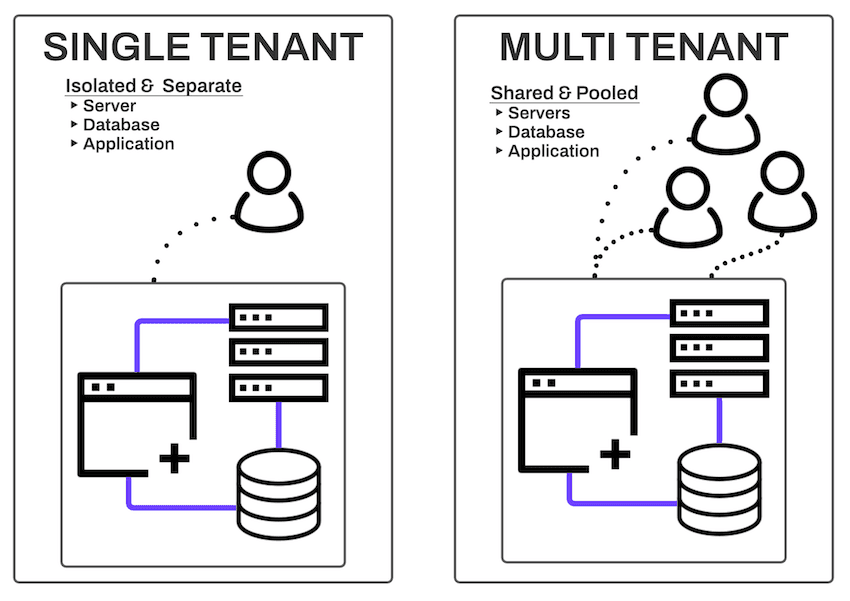
Benefits of single tenant cloud architecture
Data security: Minimized risk of a data breach
Security is the main advantage of the single-tenant system. Since every customer has their own super-secure servers and database, all the servers, applications, and data exist in isolation. This means if a single customer’s data were compromised, nobody else would be affected by that vulnerability. (Except if that’s you, then you’d be in some trouble.)
Stringent security protocols mean there’s an extremely low risk of a data breach or significant downtime anyway—but it’s good to know that your customer data is protected if the worst should happen.
This is why single-tenancy architecture is popular with businesses or sectors with particular privacy and security concerns, such as healthcare and finance.
Control: More customization options are available on software and hardware
As a single-tenant customer, you get your own dedicated software and hardware. Any changes made to these will not affect any other tenants, so your architecture can be configured any way you please. It’s like painting the walls of your apartment any color you want, without having to get agreement from your housemates.
You can choose to have each piece of software purpose-built for your needs—or, if you prefer to do things your own way, it’s possible to customize the user interface yourself when the software is installed locally (although you won’t have access to the underlying code).
This also has a negative side because “yes” you can configure everything to the millionth degree, but you also “have” to configure everything to the millionth degree.
What is multi-tenancy?
As you’ve probably guessed, multi-tenancy means that multiple customers are served by a single instance of software and its supporting infrastructure. Each customer shares the software application, tertiary applications, database, and the same compute array which processes all the data.
However, the individual data for each instance remains isolated—it can’t be accessed by any other customer. With the right settings in place, the security risk is still low. Multi-tenant providers build security and data isolation from the very beginning. It is extremely rare, to the point of almost “never” for cross breaches of data.
To revisit our real estate parallel: it’s like an apartment building where each apartment is a separate entity with its own lockable door, but all owners share communal facilities like the laundry room and the pool (your apartment has a pool? Lucky duck).
Although multi-tenancy architecture is favored by smaller organizations and startups, it has become the standard for enterprise as well. Cloud providers such as Dialpad are able to offer lower costs and better features—without compromising security.
And in fact, Dialpad has quite a few built-in security controls in its communications platform as well, such as the ability to lock meetings, remote unwanted guests, and admit attendees through a virtual waiting room:
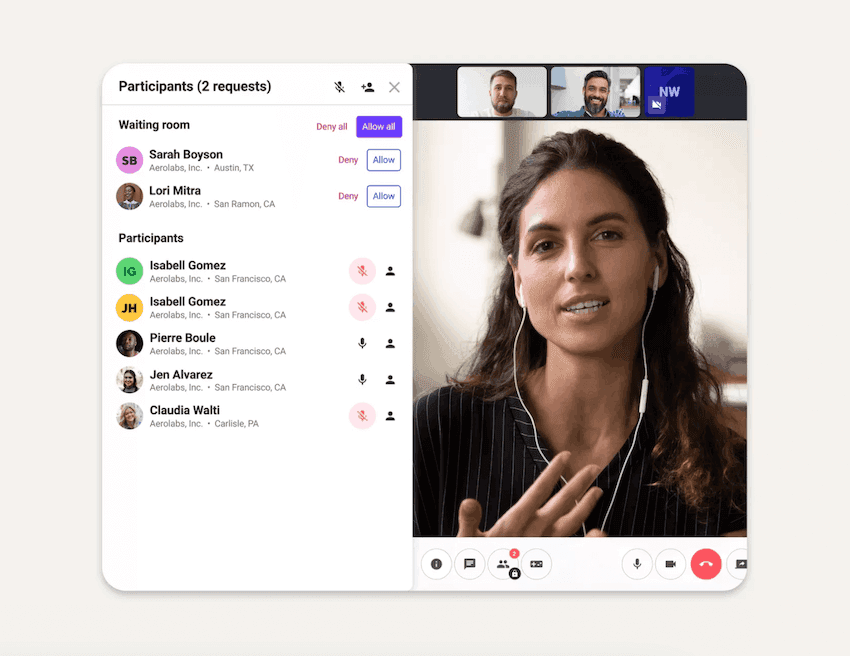
Benefits of multi-tenant cloud architecture
Flexibility: Ease of deployment
SaaS providers (like Dialpad) leverage multi-tenant systems which make it easy and fast to deploy SaaS applications and to scale them as needed. That’s because the basic environment is the same for each customer (with some optional configurations), so you’re tapping into existing software that’s ready to roll.
Since they’re set up to cater to multiple customers, cloud service providers like Dialpad have optimized the onboarding process to make it as painless as possible. They’re able to offer superior customer service for the same reason. They can even hook into your existing systems like Google Workspace, Microsoft 365 or Okta to automate user management.
SpinCar, a digital merchandising platform for the auto industry, found it easy to onboard and train 60 staff when they switched their communications to Dialpad's UCaaS platform. With an intuitive interface and features, it’s simple to add (or remove) new users and phone lines with just a couple of clicks in your account:
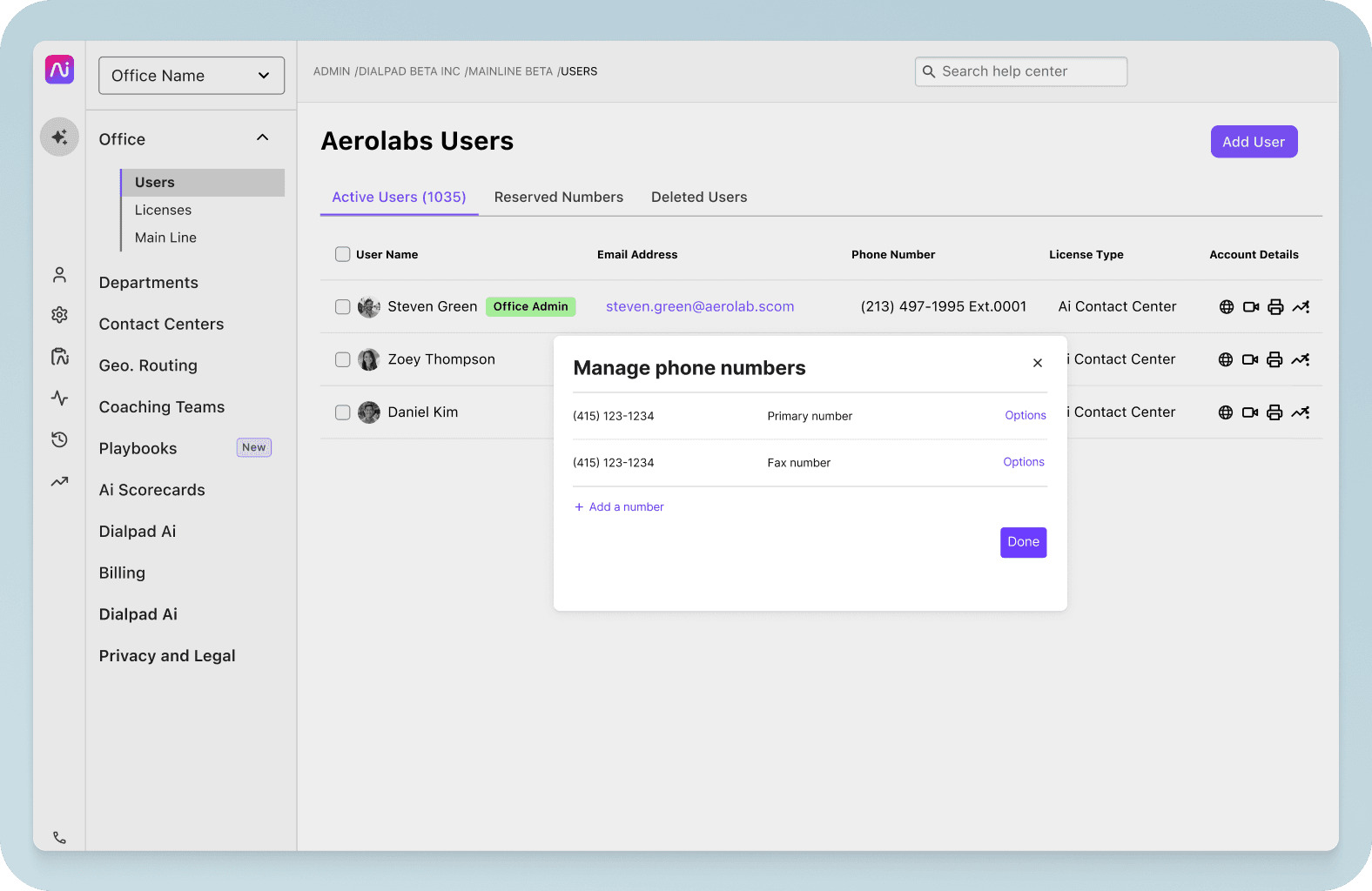
More Integrations: Easy sharing across customers
Multi-tenant cloud solutions are able to provide more integrations than their single-tenant SaaS counterparts because the integrations are easily shared between customers through the use of APIs. They can do the heavy lifting of development, but then offer that to multiple customers.
So, if your business carries out its processes on various apps (Salesforce, Zoho, Microsoft Dynamics, Okta, Onelogin, etc…), you’ll be able to continue using them in conjunction with your new SaaS platform. This gives you extra functionality and ensures that data from all integrated apps is synced for optimum visibility.
For example, handmade apparel company Tecovas was able to improve its customer service thanks to Dialpad’s seamless integration with the Kustomer CRM platform:
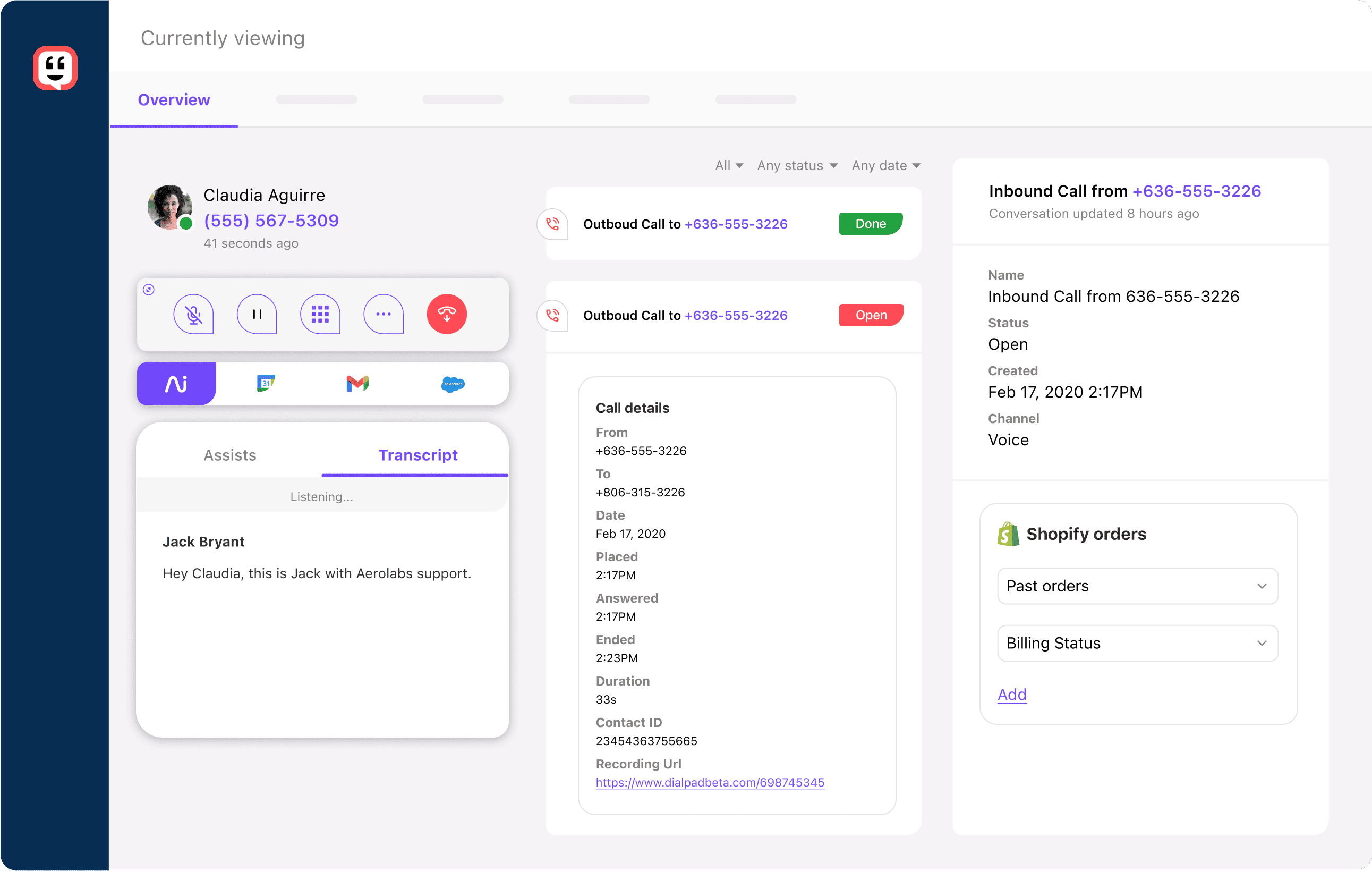
In fact, Dialpad has so many integrations that it’s able to function as a complete UCaaS platform—which means all your business software needs are covered without having to look elsewhere.
Scale: Go Green with efficient resource usage
Think about it: Every customer is different, and they don’t all have the same usage patterns. In single tenancy architecture, each client is allocated the same computing resources—which means some people exceed their allowance while others underutilize theirs.
You don’t have to plan your servers with “maximum usage” like you do in single tenant environments. Instead the shared “giant pool of resources” is managed by the multi-tenant provider and you get all the benefits.
But in the multi-tenant environment, where multiple users share services, the system can operate at maximum resource usage. It’s much more efficient, which leads to lower overall costs—speaking of which...
Cost: Reduced maintenance and management costs
In multi-tenant applications, all customers share the cost of the SaaS environment, which means the application is cheaper to build and maintain. The savings made by the vendor are reflected in the software price, with those savings passed onto you, making it more affordable than the single-tenant model.
As well as saving on the actual cost of maintenance, multi-tenant customers don’t have to worry about the task itself. The server belongs to the software provider, so they have the responsibility for maintaining it. Imagine all the technical expertise and “WOW, that’s an error I’ve never seen before,” followed by hour and hours of troubleshooting you’ll leave behind.
👉Dialpad tip:
The affordable cost and hassle-free setup are why so many startups opt for multi-tenancy. With Dialpad, startups and nonprofits also get access to the Dialpad for Good program—which partners with other companies in the SaaS ecosystem to gather the best tools to help founders scale and succeed.
Why choose a multi-tenant architecture SaaS application?
Multi-tenant solutions are the norm in SaaS, so pretty much any cloud SaaS provider you consider will be using it. It’s actually tricky to find a vendor offering single-tenant architecture. However, that shouldn’t be your only reason for leaning toward multi-tenancy!
Since multi-tenancy makes the most of the public cloud environment, it makes total sense for SaaS. It lends itself to the flexible, scalable model that suits all sizes of business—from small firms who don’t need dedicated infrastructure to large enterprises requiring access to the cloud’s almost infinite resources.
Unlimited potential: It’s highly scalable
Cloud-based SaaS solutions are already highly scalable, offering the opportunity to add or remove extra users and features as and when. With multi-tenancy, scaling has fewer infrastructure implications—with new users getting access to the same basic software—so businesses have even more elasticity.
Dialpad’s super-scalability helped healthcare staffing platform CareRev cope with rapid growth by implementing a reliable, customizable communications system.
Effortless: It’s easy to deploy and use
As we saw earlier, it’s fast and simple to implement a multi-tenancy software solution (whereas the single tenant system has a steeper learning curve in terms of customization). That’s perfect for SaaS customers who expect to start using the software immediately.
Since the tech stack is shared, you benefit from increased speed, reliability, and efficiency. Regular upgrades are delivered seamlessly. Plus, not having to manage any infrastructure or software frees you up to focus on other aspects of the business.
A huge benefit is that you, and your company, don’t need to be “masters of all the fancy software bits and bobs.” Your staff instead can focus on solving business problems instead of sorting out how to solve a technical problem.
👉Dialpad tip:
Because you don’t need any hardware to implement Dialpad’s unified communications platform, deployment is super-fast—and with the comprehensive tech stack based in the cloud, updates and new features appear automatically... Like magic.
It’s cost-effective
We keep going on about cost savings, but it’s worth reiterating. It’s likely that your whole reason for seeking cloud computing and SaaS is to save money and time, and a solution built upon the multi-tenant system helps this along.
Shared development and maintenance costs drive down prices, and the SaaS subscription model means you pay only for the services you use. Basically, you’ll have more resources to spend on other things—so if you want to buy a foosball table for the office or take your team out for cocktails, go for it!
It’s simple to configure
Although single-tenant solutions are highly customizable, this requires changes to the application’s code and servers—which can be costly and makes upgrades time-consuming. But multi-tenant SaaS architecture is designed so that one codebase is maintained for all customers.
That means you can configure the application for your needs without changing the code or data structure. It also makes the upgrade process a whole lot easier.
Something else you might need to know is that the multi-tenant model incorporates two different ways to organize data:
Physical separation
Logical separation
Logical separation: Data and servers
Logical separation is often used by office networks. They are separated into “zones” for each part of the business, and workers can only access information from their own sector. For instance, HR data should only be accessible by people who work in HR. This makes it more difficult for potential attackers to access the entire IT environment.
Public cloud multi-tenancy is similar in that all customers share one database (often it’s a lot of separate databases, but you can think of it as a “data set.” Customer data is segregated within it.
Physical separation
For critical information, it’s possible to segregate the data further by using physical separation. Because they’re not linked, data can only be accessed from the actual device that contains it.
In cloud computing, this can be achieved by using different databases for different tenants—which some multi-tenancy vendors are able to provide.
The most common multi-tenant application structures
Multi-tenant architecture is most often found in the three main branches of cloud computing: PaaS, IaaS, and SaaS. (Acronyms are popular here! Read on for a translation.)
PaaS: Platform as a Service
In this model, a third-party provider supplies hardware and software tools over the internet, including APIs, gateway software, or web portals.
This platform is delivered via the web, which means that all operating systems, updates, storage, and infrastructure are managed by the vendor. It builds on virtualization technology, so resources can easily be scaled up or down.
Some examples of PaaS are AWS Elastic Beanstalk, Windows Azure, Google App Engine, and OpenShift.
Iaas: Infrastructure as a Service
IaaS allows businesses to lease cloud computing infrastructure, including servers, networks, operating systems, and storage, over the internet. It’s a bit like renting the servers that you might have today—but instead, you have full control over these, with the ability to add/remove them at a moment’s notice.
You can run any operating system or application on these servers without owning physical hardware, such as in-house web hosting servers.
Examples of IaaS include DigitalOcean, Amazon Web Services (AWS), Microsoft Azure, and Google Compute Engine (GCE).
SaaS applications
In case you’ve gotten this far without understanding what SaaS is, let’s recap!
Software as a Service is the most commonly-used option for multi-tenant cloud computing. Instead of buying software and downloading or installing it on your own devices, you lease SaaS applications from a third-party vendor to get access to software over the internet.
The application is hosted on a remote server and managed from a central location, with the provider taking care of all maintenance and support on your behalf. Like the other “as-a-service” models, it’s subscription-based, so there’s no CAPEX, and you only pay for what you use.
The affordability and fast deployment make it ideal for small companies that need to launch quickly. Yes, you’re putting security and performance in the hands of the vendor—but if you choose a reputable one (like Dialpad), that won’t be an issue.
And with the vendor in charge of storage, security, updates, software updates, bug fixes, new features, and maintenance, you’ll have a lot less to worry about yourself. Dialpad doesn’t farm out its operations to third-party providers, so it retains complete control of its own platform.
Is single-tenant or multi-tenant architecture best for you?
In many cases, multi-tenant is likely the better choice for businesses. We get that it’s difficult to balance security against cost-effectiveness and ease of use, but if you choose the right multi-tenant provider, you don’t have to compromise.
Dialpad uses the multi-tenant SaaS model to offer customers an affordable, feature-rich platform that’s ready to scale with your business. With dual-cloud architecture and geo-redundant data centers, your critical data is always safe (and you get 100% guaranteed uptime, too).
Want to see how Dialpad’s multi-tenant contact center platform works?
See how it can make your IT and contact center teams' lives easier with a product tour!
